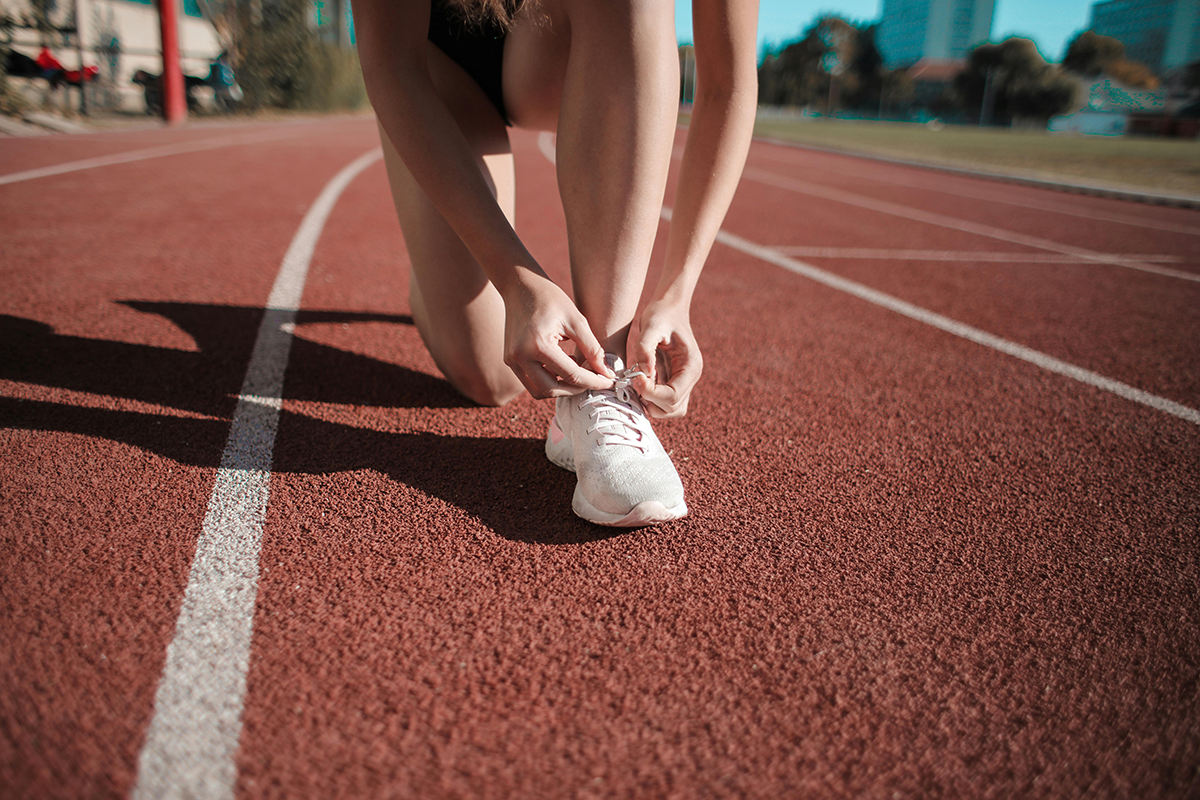Train like an athlete

2024 Olympic fever is in full swing, inspiring countless people to take their fitness training to the next level. An expert with Baylor College of Medicine breaks down some ways to get into peak performance.
“It might not seem possible, but you absolutely can train like an athlete,” said Dr. Marcus Knox, a physical therapist in the Joseph Barnhart Department of Orthopedic Surgery. “Even if you don’t have access to special equipment, you do have the capability to strengthen your body with exercises that use your body weight, like calisthenics. Combined with discipline and proper programming, you can make big strides.”
Speed, strength, stamina
Regardless of the sport, speed, strength and stamina are three disciplines almost every athlete concentrates on when preparing to compete.
Speed is determined heavily by the strength of fast-twitch fibers found in the glutes and quads. These fibers are a big dictator of how forcefully you hit the ground when you run and how quickly you can pick your legs back up after each step. The speed ladder, a piece of training equipment, allows athletes to improve the quickness of their feet striking the ground as well as the agility required for athletes to be aware of where their feet are hitting the ground. Increasing your speed is also dictated by how strong your legs are. Knox recommends focusing on single-leg workouts like lunges and single-leg squats.
“Running is basically jumping from one leg to another, so increasing the force you are able to jump with on each leg will translate to faster speeds,” Knox said.
Strength is necessary for all sports, but each sport will have regimens that focus on strengthening certain parts of the body. Weightlifting regimens should be supplemented with explosive exercises, movements where you exude high bursts of lots of energy in a short amount of time, to train muscles, tendons and joints to be prepared for use in a sport. For overall strength, Knox encourages people to ensure that their weightlifting routines have push and pull components that move in vertical, horizontal and diagonal directions to activate as many muscles as possible.
Stamina will keep you in the game longer and may be the most difficult to improve. Whereas sports like sprinting and powerlifting require lots of energy in a short amount of time, soccer and long-distance running require lots of energy over long periods. Knox recommends improving stamina by increasing the amount of effort put into an exercise over time while using the same amount of time to rest in between each exercise. For weightlifting, this may look like increasing the amount of weight and reps you can bench or squat while only resting one to two minutes between sets. For long-distance running, this could look like trying to beat the time it takes you to run a mile after resting for 5 to 10 minutes after running the previous mile.
The power of recovery
Although athletes may have access to teams of people who keep them in peak condition by being active, resting is an often-overlooked process that many do not prioritize when training.
“A lot of professional athletes will have access to state-of-the-art recovery equipment like air-compression sleeves, ice and contrast baths and even hyperbaric chambers that allow the muscles to recover,” Knox said. “Athletes will incorporate these strategies to speed up recovery so that they can train and exercise multiple times a day. The everyday person might not have access to this kind of equipment, but they will recover more efficiently and efficiently by prioritizing a healthy sleep schedule, which is when the body naturally recovers.”
Becoming a pro of the mental game
Healthy eating, sleeping and exercising habits can lead to tangible results, but before that, Knox reminds people that beginning or working to the next level of their fitness journey need to ensure their mentalities are in a correct and healthy place. Start by setting an obtainable goal. From there, increase the difficulty of your goals in small increments. These goals will keep you accountable in your journey while also quantitatively showing you your progress.
Finally, Knox reminds people that while it’s great to aspire to look like a professional athlete or even a movie star, this comparison can be detrimental.
“Take stock of your life; do you have a family you need to provide for? Do you have responsibilities that might not allow you to train excessively? It is these peoples’ jobs to stay in shape and they have access to nutritionists and trainers and spend millions of dollars to get where they want to be,” Knox said. “Be realistic, but be disciplined. That’s how you’ll be able to go far with your goals.”
By Aaron Nieto



